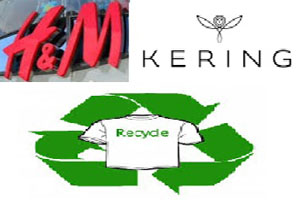
H&M, Kering to bring a revolutionary innovation in textile recycling
YarnsandFibers News Bureau 2015-04-01 11:00:00 – USAH&M and Kering clothing brand Puma are coming on board as development partners to help test the commercial viability of British upcycler Worn Again's model to meet the fashion industry’s rising demand for polyester filament and cotton fiber textiles.
The chemical-to-chemical textile recycling process used by Worn Again is designed to extract polyester and cotton from discarded clothing and textiles.
One proposed effect of the scheme, if successful, is a reduction in the requirement for landfill sites to deal with waste clothing and fabrics; another is the alleviation of pressure on oil, a non-renewable resource, as an essential ingredient in the production process.
In 2014, the global production of polyester filament and cotton fibre was approximately 65 million tonnes. In 2020, the global demand for these fibres is estimated to be 90 million tonnes. To address this, and the growing issue of clothes-to-landfill, Worn Again's textile-to-textile chemical recycling technology is the first of its kind able to separate and extract polyester and cotton from old or end-of-use clothing and textiles. Once separated, the aim is for this unique process to enable the 'recaptured' polyester and cellulose from cotton to be spun into new fabric creating a 'circular resource model' for textiles.
This new technology addresses major barriers in textile-to-textile recycling, namely: how to separate blended fibre garments; and how to separate dyes and other contaminants from polyester and cellulose.
By converting the reclaimed raw materials into yarn, developing fabric and creating garments, these tests will aim to demonstrate that the technology may be commercially viable, and may be able to provide an effective solution for the circular recycling of clothes and textiles.
Worn Again's technology is entering the next phase of development tests. Forward-thinking global companies H&M and Kering, via its brand PUMA, will be monitoring the testing of this technology.
Market Intelligence
Ask for free sample Report

experience
Customer Base
dedicated team
Countries Served Worldwide









